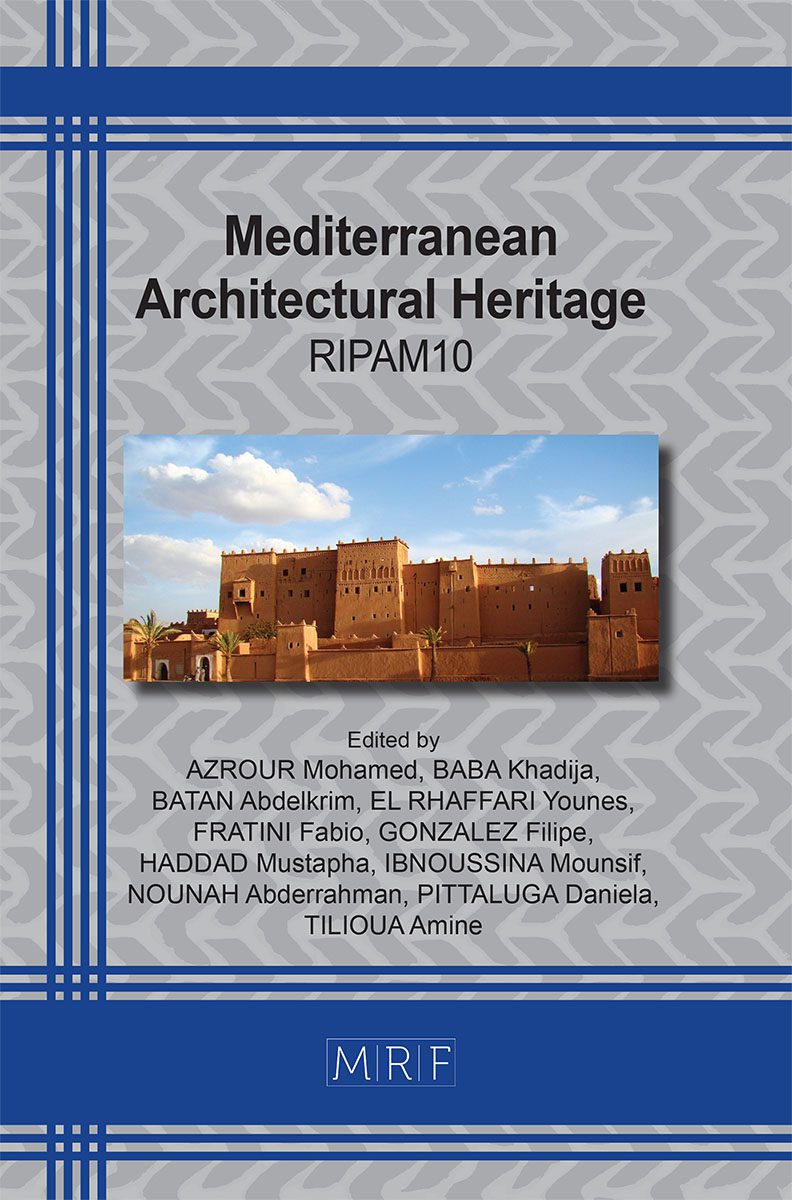Seismic Vulnerability Assessment of a Building Aggregate in the Historical Centre of Florence
Alessia LICO, Chiara MARIOTTI, Giulia MISSERI, Luisa ROVERO
download PDFAbstract. Safeguarding the built heritage represents an urgent challenge for the culture and identity of each country. In Italy, past seismic events have highlighted the vulnerability of historic urban centres, as aggregates of historic masonry buildings. In this work, the seismic vulnerability of the historic centre of Florence, a UNESCO heritage site since 1982, will be investigated in the context of the Vulnerability Index Method, an empirical approach for the vulnerability assessment at the territorial level, proposed by Benedetti and Petrini in 1984, adopted by the Italian Group of Defense from Earthquake in 1993 and integrated by Formisano in 2011 with the key factors linked to the influence of the aggregate layout in the seismic behaviour. In particular, an urban aggregate composed of fourteen masonry in-line buildings (two palaces in the corner and twelve serial intercluded buildings) is considered as a case study. Buildings show a long narrow plan and an internal court and have undergone many transformations throughout history. Historical and typological analysis and material and constructive investigations were carried out to aid in understanding the mechanical behaviour of these buildings. These preliminary analyses allowed us to highlight the specific features and vulnerabilities of the aggregate, such as the presence of an internal court, which was the object of a specific study carried out supported by non-linear FEM investigations. In particular, this study was aimed at understanding how the GNDT form of the Seismic Vulnerability Level II can describe the vulnerability induced by the internal court in the seismic behaviour of the typical historical buildings in the city centre of Florence. First, the parameters of the GNDT form, influenced by the internal court, have been identified. Some considerations are reported by evaluating the results relating to these parameters, obtained for the application of the case study. Subsequently, some possible proposals for integrating the GNDT form were formulated to include the local vulnerability induced by the internal court in the structural behaviour of the typical historical buildings of the UNESCO city centre of Florence.
Keywords
Aggregate Buildings, Masonry, Internal Court, Vulnerability Index Method, FEM Analysis
Published online 3/15/2024, 11 pages
Copyright © 2024 by the author(s)
Published under license by Materials Research Forum LLC., Millersville PA, USA
Citation: Alessia LICO, Chiara MARIOTTI, Giulia MISSERI, Luisa ROVERO, Seismic Vulnerability Assessment of a Building Aggregate in the Historical Centre of Florence, Materials Research Proceedings, Vol. 40, pp 79-89, 2024
DOI: https://doi.org/10.21741/9781644903117-8
The article was published as article 8 of the book Mediterranean Architectural Heritage
![]() Content from this work may be used under the terms of the Creative Commons Attribution 3.0 license. Any further distribution of this work must maintain attribution to the author(s) and the title of the work, journal citation and DOI.
Content from this work may be used under the terms of the Creative Commons Attribution 3.0 license. Any further distribution of this work must maintain attribution to the author(s) and the title of the work, journal citation and DOI.
References
[1] G. Caniggia, G. L. Maffei. Composizione architettonica e tipologia edilizia 1/2. Il progetto nell’edilizia di base. Marsilio editori, Venezia, 1979.
[2] N. Chieffo, (et al.). A vulnerability index-based approach for the historical centre of the city of Latronico (Potenza, Southern Italy), in Engineering Failure Analysis, n. 136. 2022. https://doi.org/10.1016/j.engfailanal.2022.106207
[3] A. De Maria, C. Donà. (a cura di). Manuale delle murature storiche. Analisi e valutazione del comportamento strutturale. Volume I. DEI Editore, Roma, 2011.
[4] A. Giuffrè. Letture sulla meccanica delle murature storiche. Edizioni Kappa, Roma, 1991.
[5] G. A. Centauro, C. Francini (a cura di). Progetto HECO (Heritage Colors). Metodologie Analisi Sintesi Apparati Valutazione d’impatto sul sito UNESCO Centro Storico di Firenze. DiDaPress, Firenze, 2017.
[6] A. Preciado (et al.). Earthquake risk assessment methods of unreinforced masonry structures: Hazard and vulnerability, in Earthquakes and Structures. 2015. https://doi.org/10.12989/eas.2015.9.4.719
[7] R. Maio. Seismic vulnerability assessment of old building aggregates. Master’s thesis. University of Aveiro. 2013.
[8] G. M. Calvi (et al.). Development of Seismic Vulnerability Assessment Methodologies Over the past 30 years, in ISET Journal of Earthquake Technology, N. 472, Vol. 43. 2006.
[9] D. Benedetti, V. Petrini. Sulla vulnerabilità sismica di edifici in muratura: un metodo di valutazione. A method for evaluating the seismic vulnerability of masonry buildings, in L’industria delle Costruzioni, n.149. 1984.
[10] GNDT. Rischio sismico di edifici pubblici- Parte I. Proceeding of CNR- GNDT, Roma, 1993.
[11] M. Ferrini (et al.). Rilevamento della vulnerabilità sismica degli edifici in muratura. Manuale per la compilazione della Scheda GNDT/CNR di II Livello (versione modificata). Regione Toscana, 2003.
[12] A. Formisano (et al.). Un Metodo per la Valutazione su larga scala della Vulnerabilità Sismica degli aggregati storici. Anidis, Bari, 2011.
[13] National Institute of Building Sciences. NEHRP Recommended Seismic Provisions for new Buildings and other structures. FEMA, 2020.
[14] G. L. Maffei. La casa fiorentina nella storia della città dalle origini all’Ottocento. Marsilio editori, Venezia, 1990.
[15] G. Cataldi. Palazzetti a schiera in via dei Servi a Firenze, in Studi e documenti di architettura, n.14, Firenze, 1987.
[16] C. Tomasini Pietramellara. Tipologie edilizie, in Firenze, studi e ricerche sul centro antico. Nistri-Lischi, Pisa, 1974.
[17] C. Chiappi, G. Villa. Tipo/progetto/composizione architettonica. Alinea editore, Firenze, 1980.
[18] MIT. Circolare 21/01/2019. Istruzioni per l’applicazione dell’aggiornamento delle Norme Tecniche per le costruzioni, di cui al decreto ministeriale 17/01/2018. 2019.












